By Doyle Sumrall, NTEA Managing Director
This article was published in the May 2017 edition of NTEA News.
Held in conjunction with The Work Truck Show® 2017, the Green Truck Summit featured expert perspectives on how the industry can make an immediate impact on greenhouse gas and criteria pollutant reduction. As there was a large amount of valuable information shared, following are key points from the general sessions held on March 14.
Dr. Wilfried Achenbach, senior vice president of engineering and technology at Daimler Trucks North America, gave the keynote address, providing a look at the future of truck connectivity, active safety, and autonomous driving and propulsion technology.
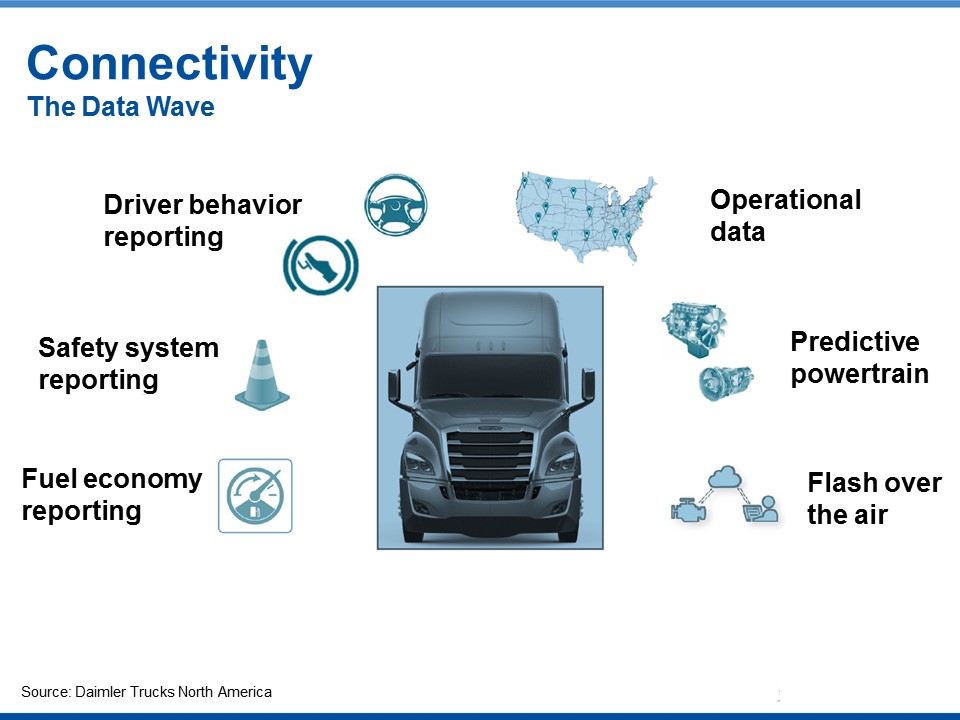
Of these topics, connectivity appears to have the clearest path forward. Not that all the questions on this subject have been answered, but there is supporting technology and a somewhat defined directional course.
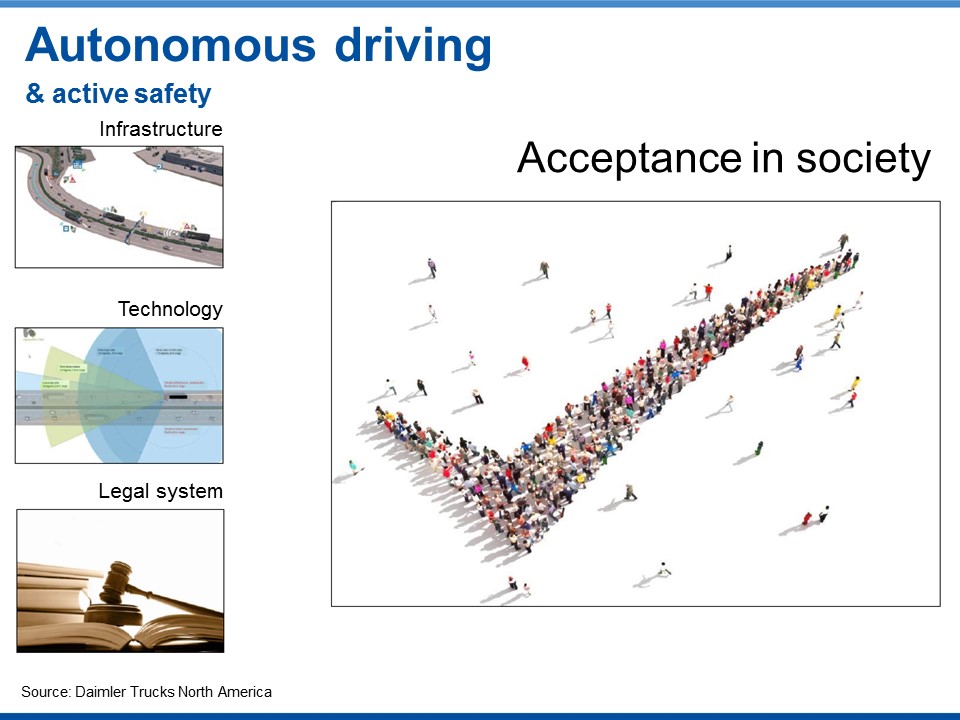
Autonomous driving is an area where technology is ahead of legislation and even social acceptance. Positives such as fuel savings and compensation for distracted driving appear beneficial, but Dr. Achenbach emphasized technology does not emulate an individual’s complex ability to manage information and make decisions.
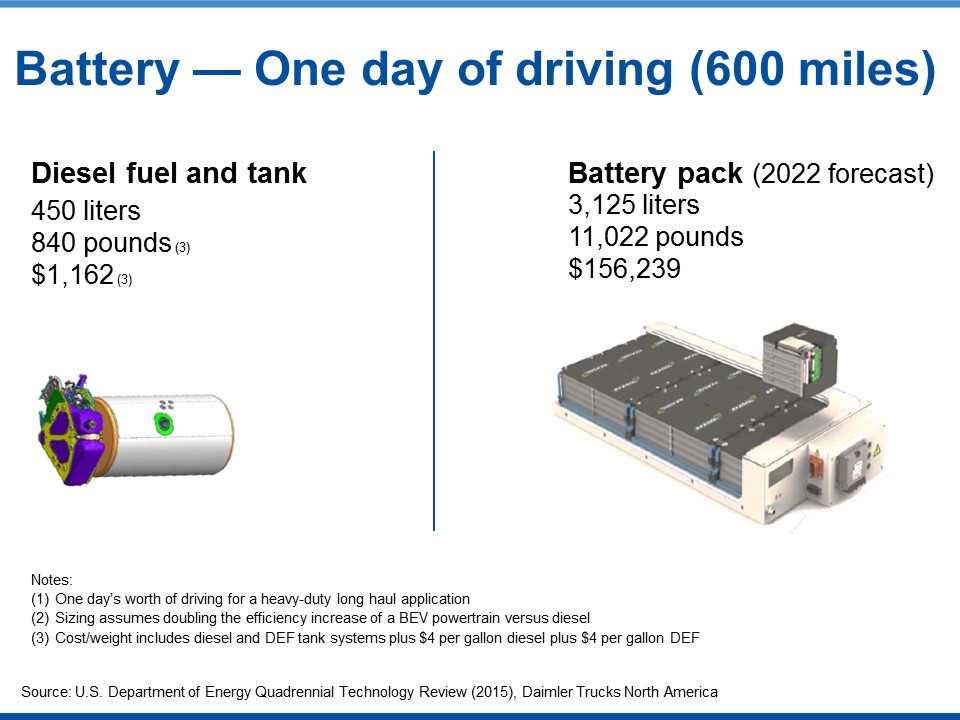
Regarding propulsion, the emissions side of diesel faces tremendous pressure, and the industry responded with technology and innovations that offer reductions in particulate and other emissions. There are challenges to reaching zero emissions with electric drive, as shown above.
Government vision and outlook
The general session, Government Objectives for Zero-Emission Transportation, featured presentations by Jack Kitowski, division chief, mobile source control division for California Air Resources Board (CARB); Jody Proctor, director, clean air policy analysis for Transport Canada; and Reuben Sarkar, deputy assistant secretary for transportation at Department of Energy (DOE). They shared their perspectives on policies and regulatory compliance.
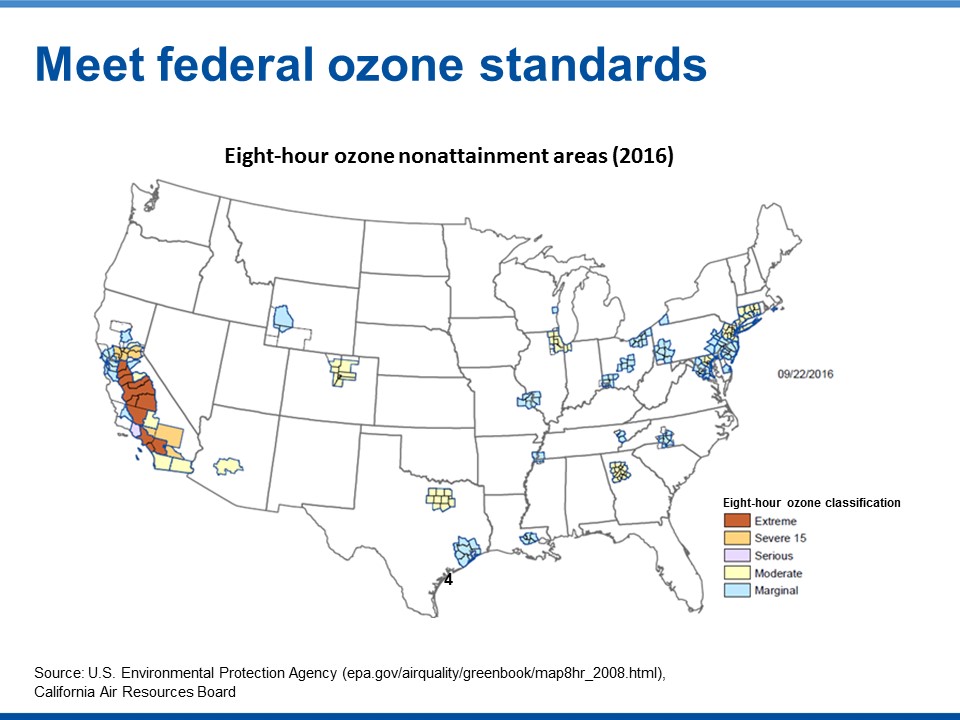
Kitowski illustrated California’s challenges with federal compliance for air quality and outlined the strategies CARB was given by state lawmakers. He also gave details on investments and incentives the state is offering to support these changes.
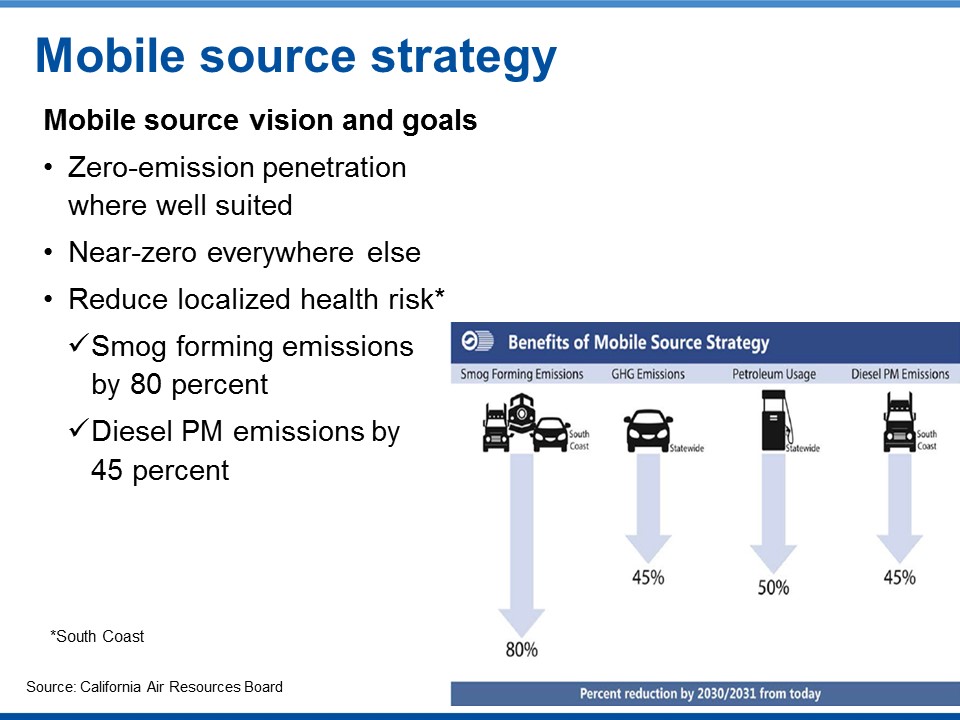
Proctor addressed the Canadian government’s analysis that climate change could cost the nation $21–43 billion per year by 2050.
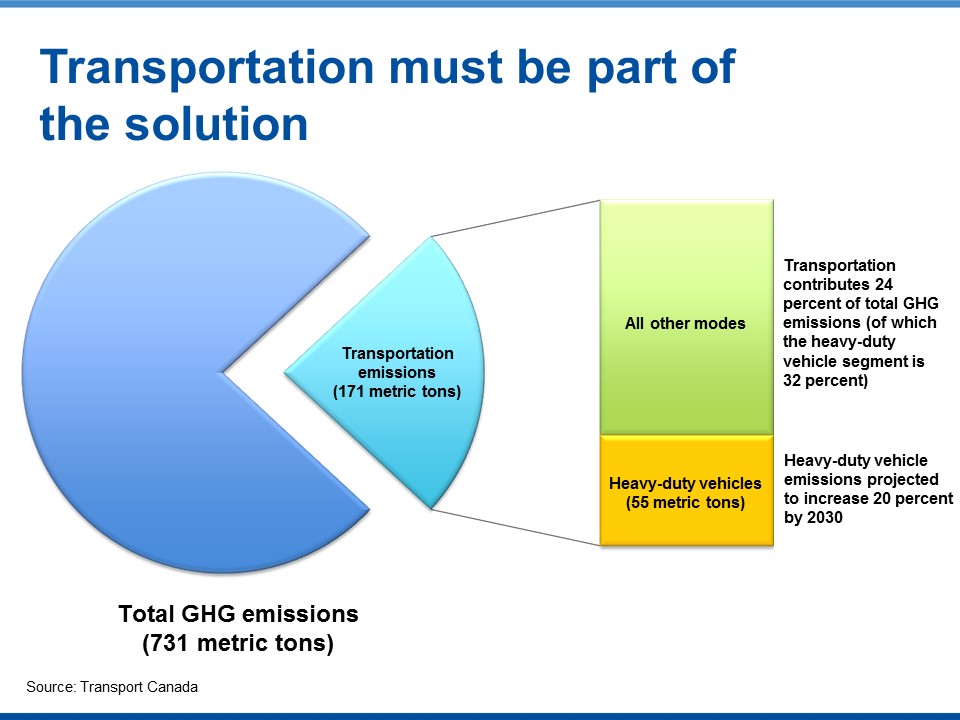
The country views transportation as a major contributor to greenhouse gas issues and feels a combined approach including carbon pricing, a clean fuels standard, and other measures will be necessary to avoid the high cost of climate change.
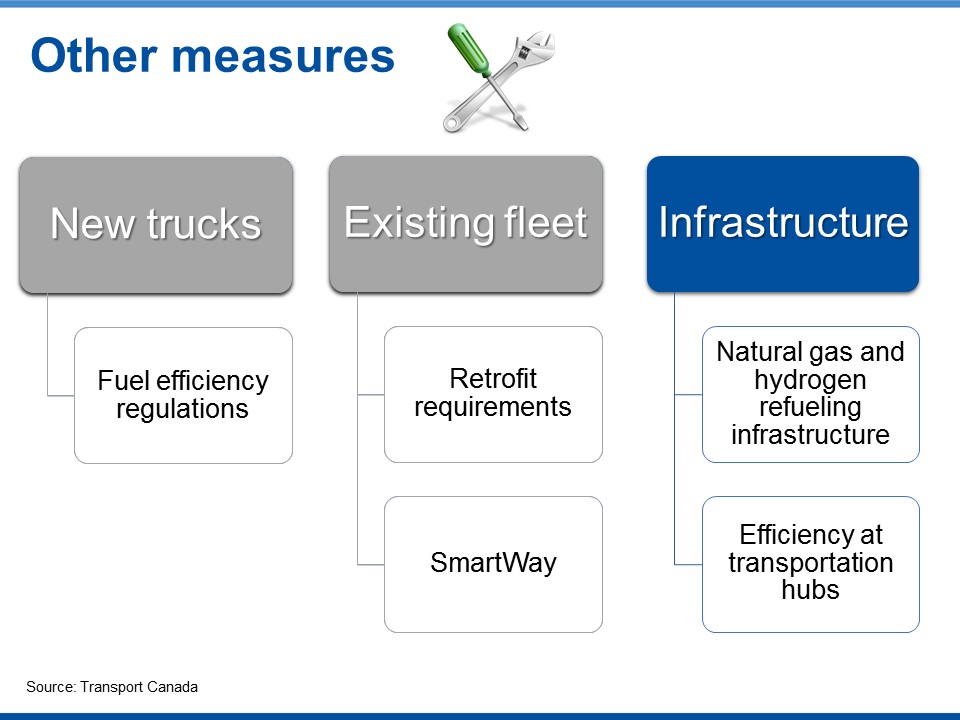
Sarkar spoke to a balanced approach from DOE. By pursuing research, development, demonstrations and deployment, it believes zero emissions vehicles can be a key part of the future of transportation. It seemed clear there will be a pathway involving alternative fuels, fuel-saving technologies, hybrids, battery electric vehicles and fuel cells.
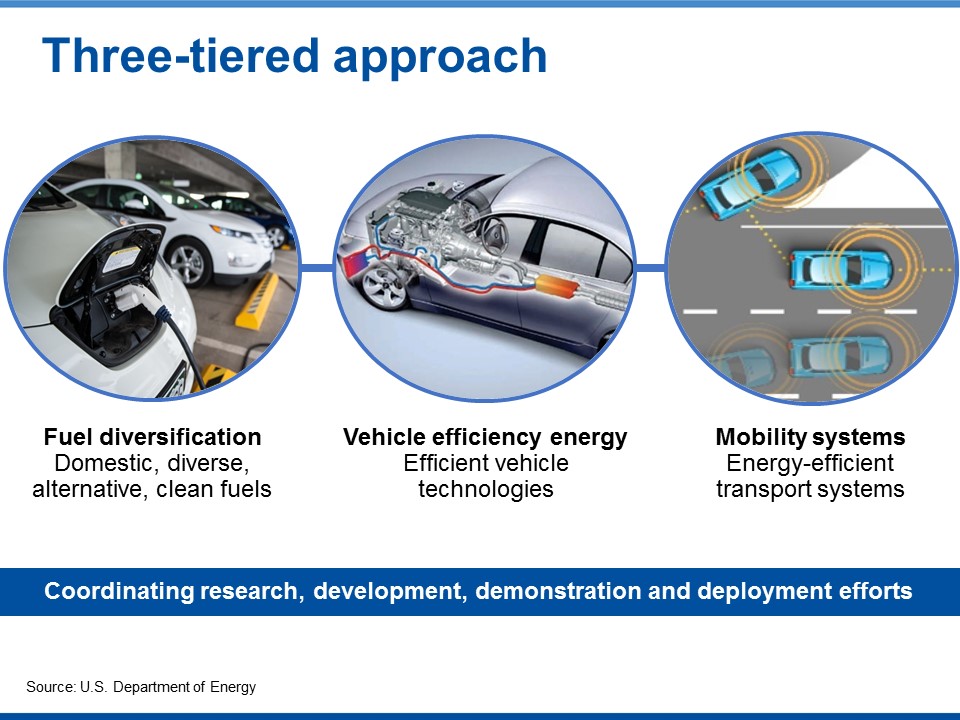
Available options
The next general session, Paving the Path to Zero-Emission Commercial Vehicles: Fuel and Technology Options, was presented by Dave Cooke, senior vehicles analyst for Union of Concerned Scientists; and Carleton Rose, president, and Mike Britt, director of maintenance & engineering international operations, ground fleet for UPS.
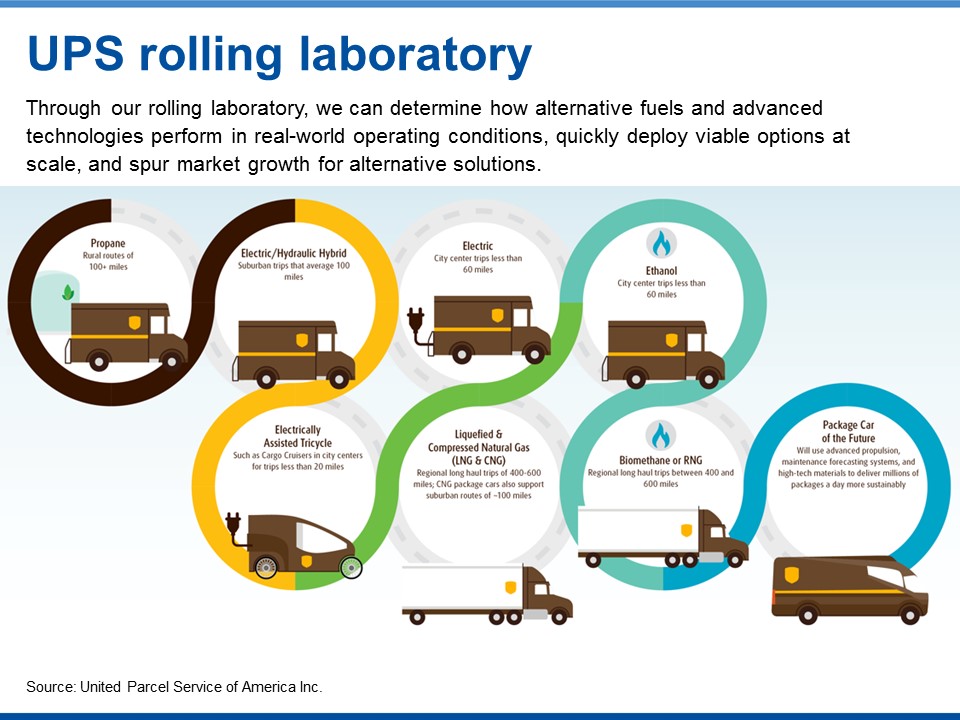
Rose and Britt spoke about UPS’s global operations, commitment to research and development, active deployment of alternative fuels and technologies, and growth of its alternative fuel and advanced technology fleet to 8,100 units in 2016.
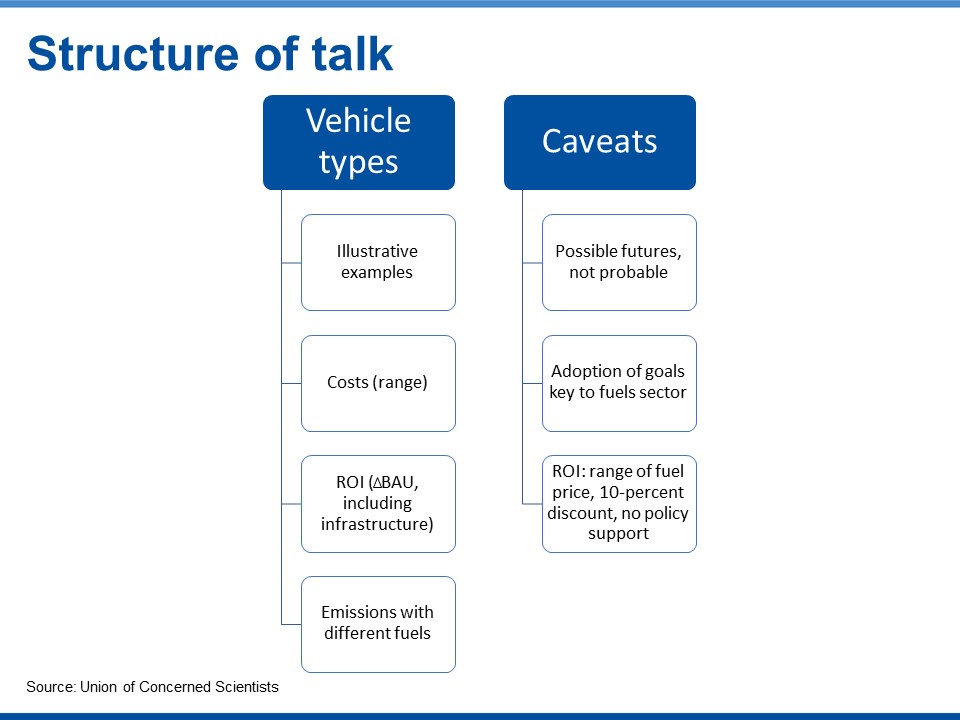
Cooke offered analysis of the current state of zero-emission vehicles out through 2030 and 2050. He leveraged input from industry, labs, and other research to round out his presentation, and highlighted questions that remain and development that will be needed. Cooke cautioned the analysis is not complete and the intent is to spark future dialogue.
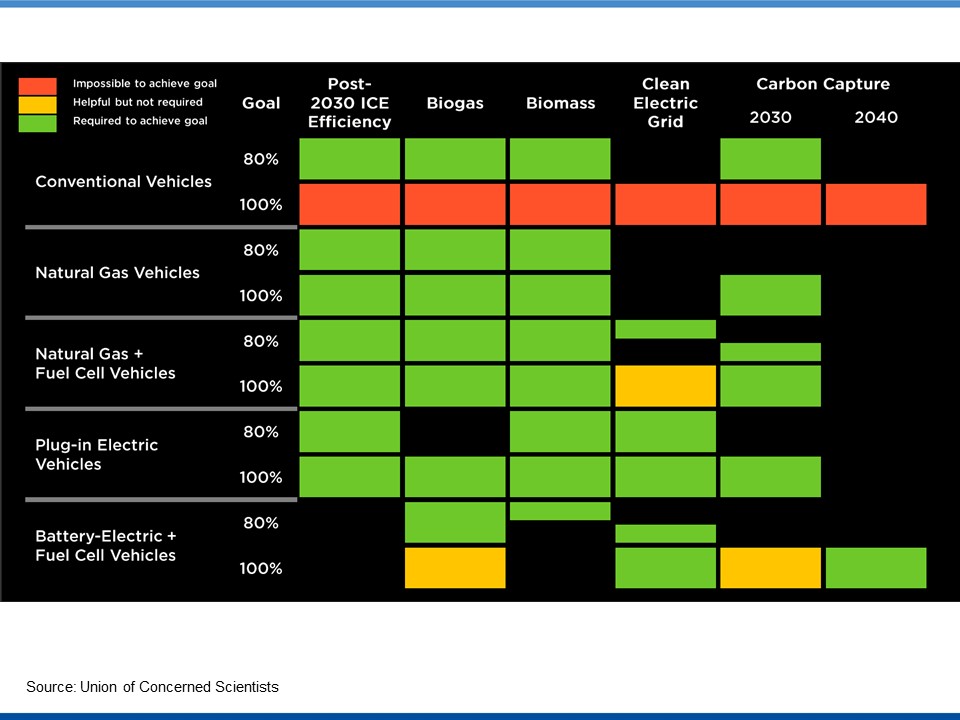
As illustrated above, there are many requirements, fuels and technologies needed to work toward achieving the goal of zero-emission vehicles. Continued research and insights from the Union of Concerned Scientists will be valuable going forward.
Evolution of renewable fuels
Renewable Fuels Come in All Shapes and Sizes was presented by Gary Lentsch, fleet supervisor at Eugene Water & Electric Board; Robert L. McCormick, principal engineer and platform lead, fuels performance at National Renewable Energy Laboratory; and Craig Moore, senior vice president and COO of Kinetrex Energy.
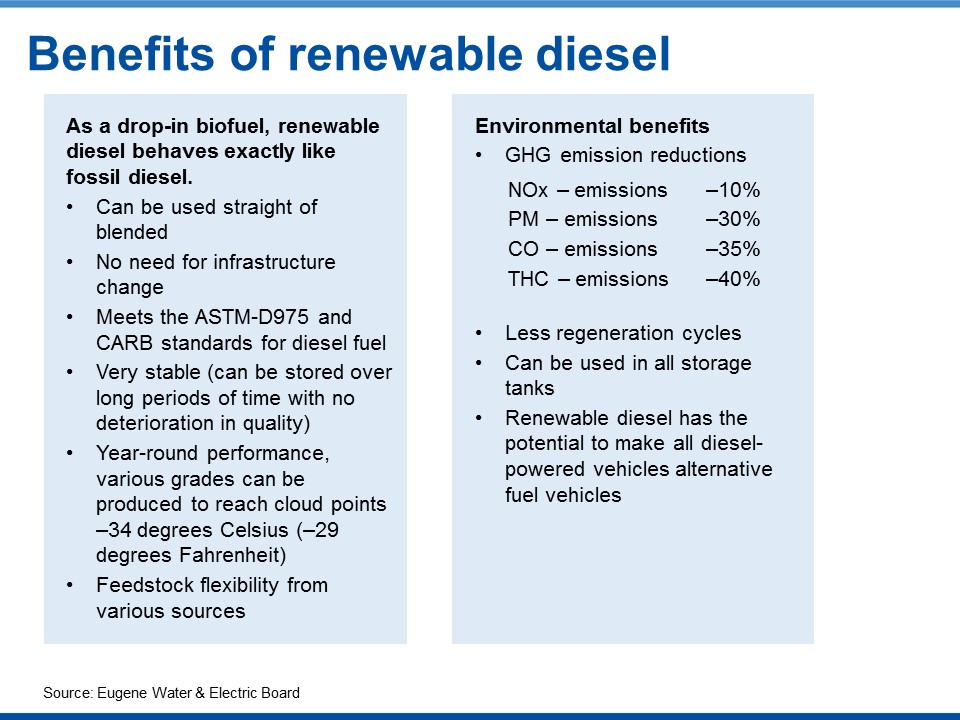
Lentsch outlined the finer points of diesel in all three forms — petroleum, bio and renewable. He emphasized renewable is a drop-in fuel with the benefit of being sustainable.
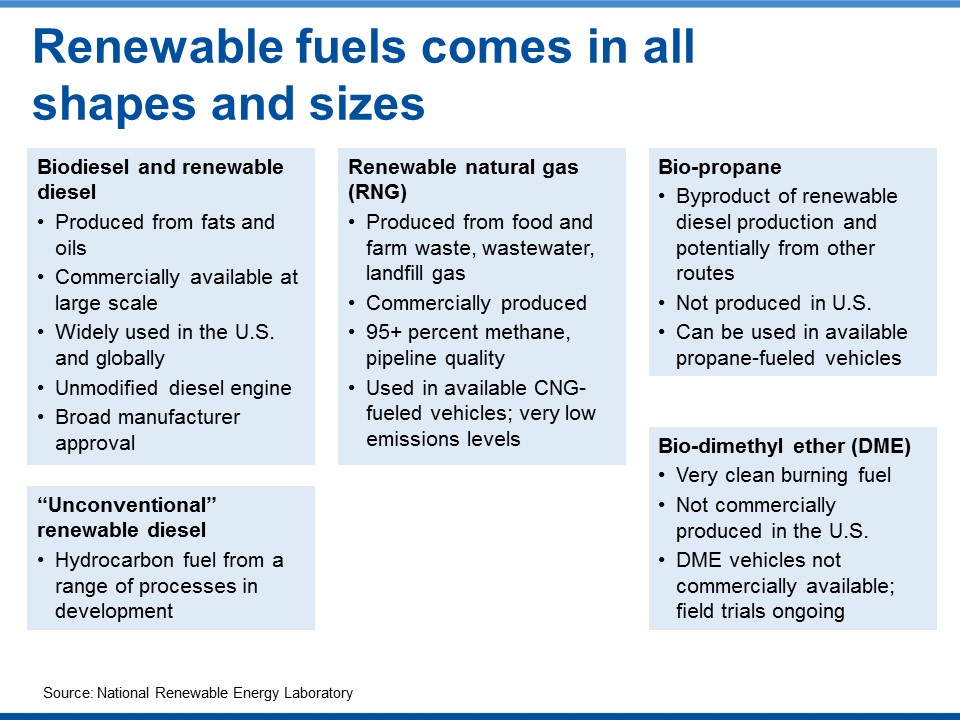
McCormick brought a wealth of knowledge on the current and future state of renewable fuels, including viability in the work truck industry.
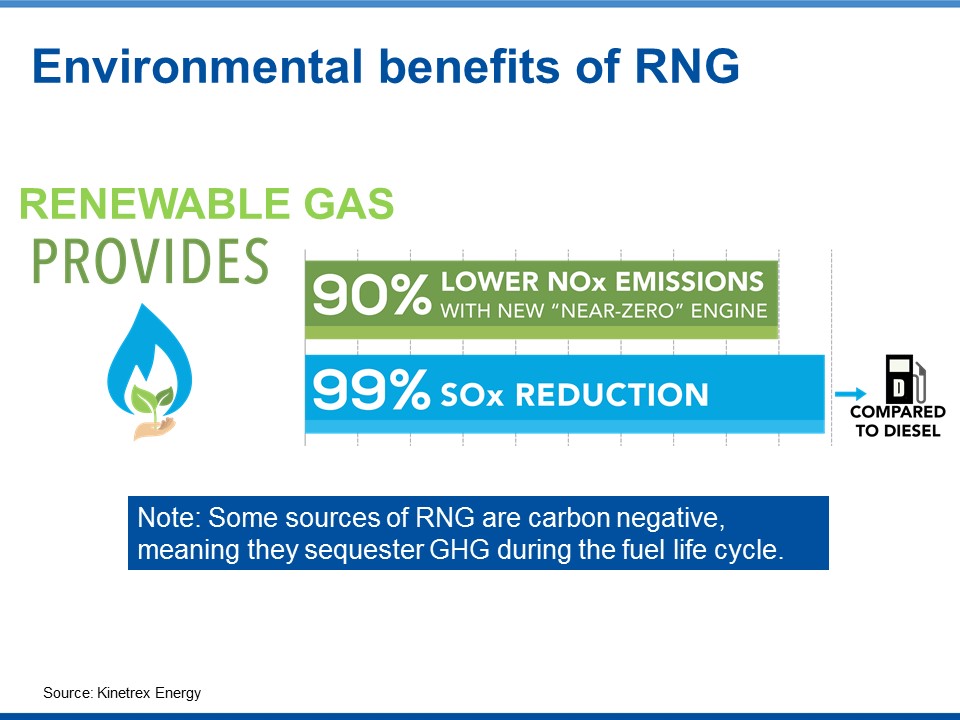
Moore demonstrated how renewable natural gas resources (waste streams like landfills, waste water, and food and agricultural waste) add to greenhouse gas emissions. But when harnessed to generate transportation fuel, they become a net positive, and in some cases, carbon negative.
Greenhouse gas Phase Two
Ken McAlinden, manager for on-board diagnostics and regulatory compliance at Ford Motor Company; Matt Spears, center director, heavy-duty diesel standards for U.S. Environmental Protection Agency (EPA); and Rob Stevens, VP strategy and engineering for ROUSH CleanTech, explained the delegated assembly provisions in greenhouse gas Phase Two regulations.
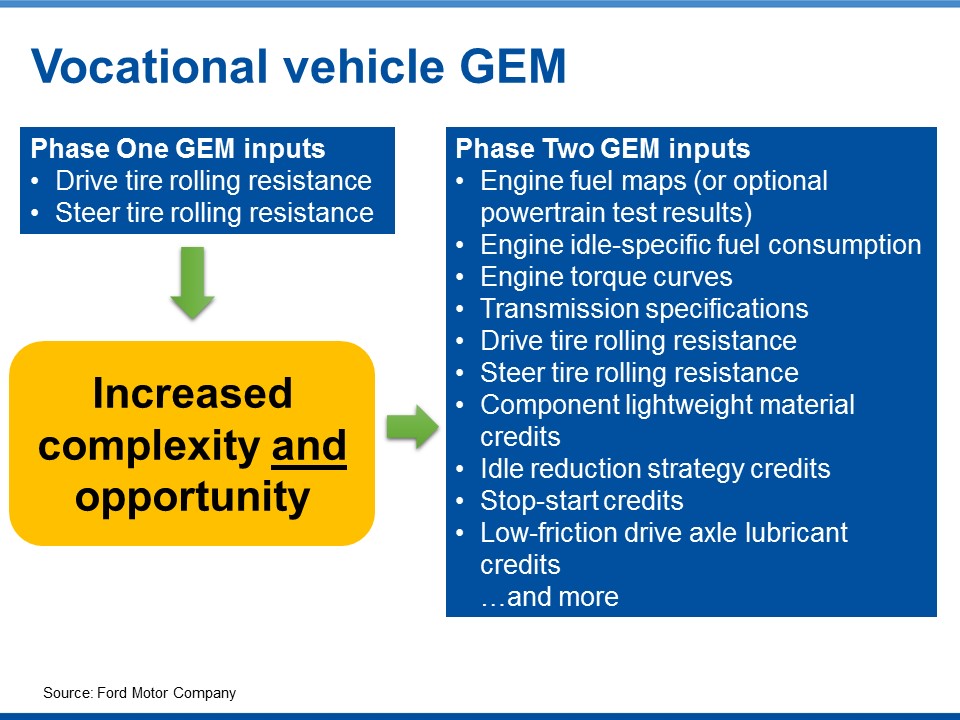
McAlinden discussed complexities and gave an OEM view of the emissions rules.
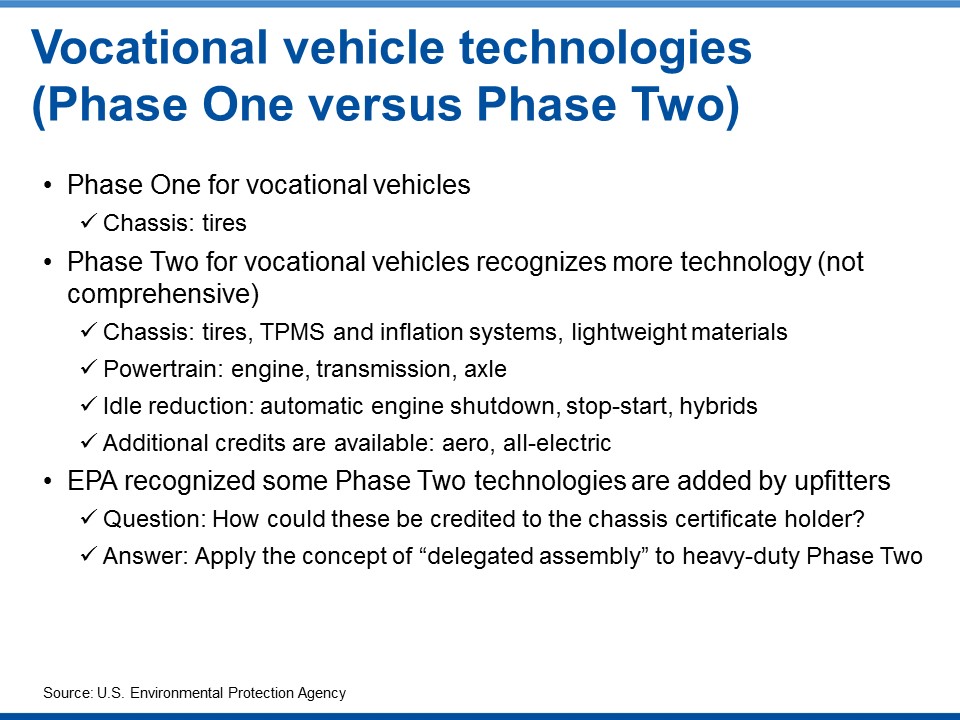
Spears gave EPA’s perspective on how technologies added by upfitters could be credited to the chassis certification holder. He pointed out that delegated assembly was derived from conversations and suggestions from NTEA.
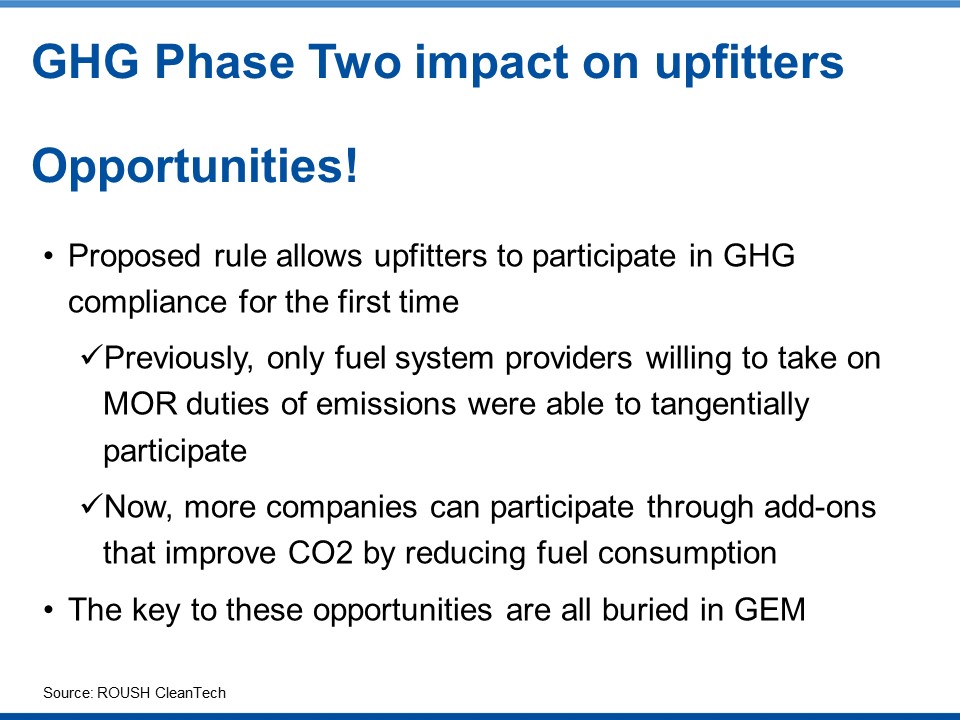
Stevens brought forth details on the process for an upfitter to take advantage of delegated assembly. He demonstrated the concept is about more than just fuels, offering a solid example using aerodynamics.
Technology reports
Mike Roeth, executive director of North American Council for Freight Efficiency, rounded out the day with insights from confidence reports enabling fleets to see the benefits of technologies and determine if they can provide improved fuel use and emissions for their operations. Learn more at truckingefficiency.org.
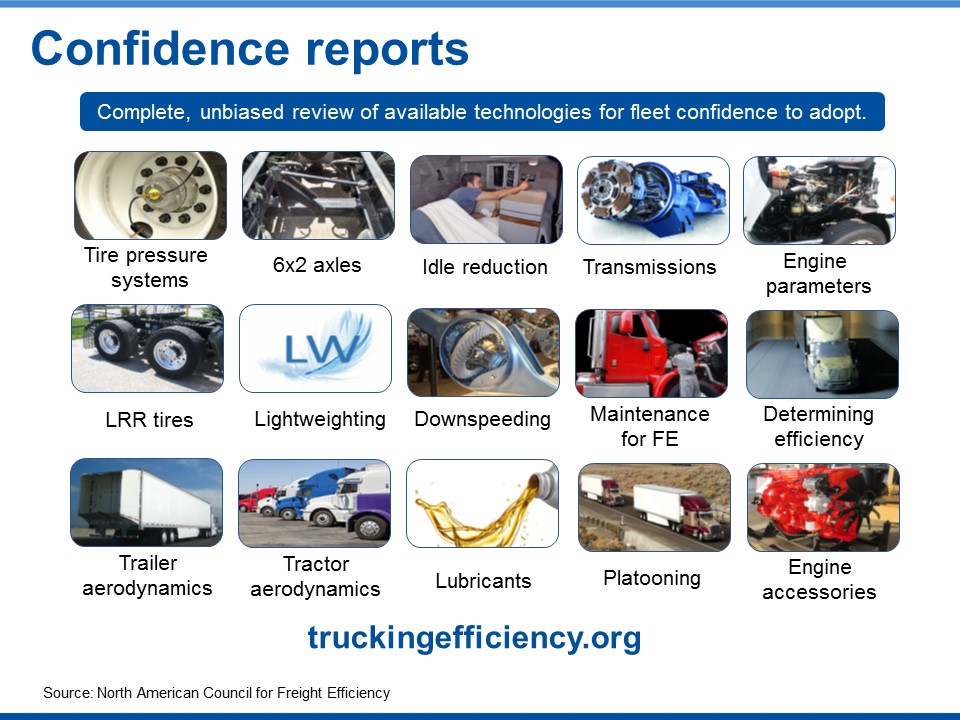
Looking forward
At the end of the day, knowledge was gained and debates were sparked. These connections are a key objective of the Green Truck Summit, and I truly hope they result in actions that help improve the work truck industry, save fuel and, ultimately, drive new relations and the deployment of fuels and technologies.
The Work Truck Show 2018 and Green Truck Summit registration opens this fall — visit worktruckshow.com/wts18signup.